Balkinization
an unanticipated consequence of
Jack M. Balkin
Balkinization Symposiums: A Continuing List
E-mail:
Jack Balkin:
jackbalkin at yahoo.com
Bruce Ackerman
bruce.ackerman at yale.edu
Ian Ayres
ian.ayres at yale.edu
Corey Brettschneider
corey_brettschneider at brown.edu
Mary Dudziak
mary.l.dudziak at emory.edu
Joey Fishkin
joey.fishkin at gmail.com
Heather Gerken heather.gerken at yale.edu
Abbe Gluck abbe.gluck at yale.edu
Mark Graber
mgraber at law.umaryland.edu
Stephen Griffin
sgriffin at tulane.edu
Jonathan Hafetz
jonathan.hafetz at shu.edu
Jeremy Kessler
jkessler at law.columbia.edu
Andrew Koppelman
akoppelman at law.northwestern.edu
Marty Lederman
msl46 at law.georgetown.edu
Sanford Levinson
slevinson at law.utexas.edu
David Luban
david.luban at gmail.com
Gerard Magliocca
gmaglioc at iupui.edu
Jason Mazzone
mazzonej at illinois.edu
Linda McClain
lmcclain at bu.edu
John Mikhail
mikhail at law.georgetown.edu
Frank Pasquale
pasquale.frank at gmail.com
Nate Persily
npersily at gmail.com
Michael Stokes Paulsen
michaelstokespaulsen at gmail.com
Deborah Pearlstein
dpearlst at yu.edu
Rick Pildes
rick.pildes at nyu.edu
David Pozen
dpozen at law.columbia.edu
Richard Primus
raprimus at umich.edu
K. Sabeel Rahmansabeel.rahman at brooklaw.edu
Alice Ristroph
alice.ristroph at shu.edu
Neil Siegel
siegel at law.duke.edu
David Super
david.super at law.georgetown.edu
Brian Tamanaha
btamanaha at wulaw.wustl.edu
Nelson Tebbe
nelson.tebbe at brooklaw.edu
Mark Tushnet
mtushnet at law.harvard.edu
Adam Winkler
winkler at ucla.edu
Compendium of posts on Hobby Lobby and related cases
The Anti-Torture Memos: Balkinization Posts on Torture, Interrogation, Detention, War Powers, and OLC
The Anti-Torture Memos (arranged by topic)
Recent Posts
All That is Solid Melts Into Air
Peter Schuck on Congress' Power to Define The Boundaries on Birthright Citizenship
Originalism, Living Constitutionalism, and Birthright Citizenship
Daffy Duck, Mickey Mouse, or Goofy?
My Comments on How to Save A Constitutional Democracy by Huq and Ginsburg
The Founding and the Origins of Our Constitutionalism, Part III
Regulating Carebots for the Elderly: Are Safety and Efficacy Sufficient Standards of Review?
Big Data: Destroyer of Informed Consent
Care Robots
Who is Your Therapy App Working For?
Authoritarian Constitutionalism in Facebookland
The Invalidity of the Proposed Executive Order on Statutory Grounds
The Founding and the Origins of Our Constitutionalism, Part II
Seeing Transparency Through: Healthcare Software, Data Privacy, and Regulation
Artificial Intelligence for Suicide Prediction
The Proposed Executive Order Attacking Babies
The Founding and the Origins of Our Constitutionalism, Part I
Just A Few Blogs
ACS Blog
Alas, a Blog
Althouse
Arts and Letters Daily
Atrios (Eschaton)
Bill of Health
Buzzflash.com
Buzz Machine
Cato at Liberty
Juan Cole (Informed Comment)
Concurring Opinions
The Constitution in 2020
Corrente
Crooked Timber
Daily Howler
Daily Kos
Dana Boyd
Brad DeLong
Digby (Hullabaloo)
Discriminations
Daniel Drezner
Kevin Drum (Mother Jones)
Electrolite
En Banc
Eunomia (Daniel Larison)
Fafblog
Michael Froomkin (Discourse.net)
GovLab (Beth Noveck)
Rick Hasen (Election Law)
History News Network
How Appealing
Ignatz (Sam Heldman)
The Importance of (Ernie Miller)
Infolaw
Instapundit
International Economic Law and Policy Blog
IntLawGrrls
Jacob Levy
Jesus' General
Jurisdynamics
The Kitchen Cabinet
Mark Kleiman
Law Blog Central
Larry Lessig
Lawyers, Guns and Money
Liberal Oasis
Brian Leiter's Law School Reports
The Leiter Reports
Marginal Revolution
Megan McArdle
Memeorandum
Metafilter
Mirror of Justice
The New Republic
Newseum
No More Mister Nice Blog
Brendan Nyhan
Opinio Juris
Orcinus
The Originalism Blog
Pandagon
Passport (Foreign Policy)
Overcoming Bias
Political Animal (Washington Monthly)
Political Theory Daily Review
Political Wire (Taegan Goddard)
The Poor Man
Virginia Postrel
Prawfsblawg
Public Reason
Jonathan Rauch
Raw Story
Redstate
ReligiousLeftLaw.com
Reporters Committee For Freedom of the Press
Reproductive Rights Blog
Rothman's Roadmap to the Right of Publicity
SCOTUS Blog
Seeing the Forest
Clay Shirky
The Shifted Librarian
The Situationist
Larry Solum (Legal Theory)
Andrew Sullivan
Talking Points Memo
Talk Left
Tapped
Tbogg
TechPresident
The Paper Chase (Jurist)
Tom Paine
Tom Tomorrow (This Modern World)
Eve Tushnet
Uggabugga
University of Chicago Law School Faculty Blog
Unqualified Offerings
The Volokh Conspiracy
War and Piece (Laura Rozen)
Wampum
Oliver Willis
Wonkette
Written Description
Matthew Yglesias
Yin
Your Choice of Feeds
1. XML
powered by
2. Atom Feed
3. RSS 2.0
All That is Solid Melts Into Air
Joseph Fishkin
I woke up yesterday and saw a New York Times news alert on my phone. It read, in full, as follows:
The initial Times report contained little more than this squib. (It was updated in the hours that followed.) But it turned out to be pretty typical. Much of the news coverage throughout the day treated the legal question here as one whose answer is “unclear,” “much debated,” and generally full of doubt.
Posted
5:22 PM
by Joseph Fishkin [link]
Peter Schuck on Congress' Power to Define The Boundaries on Birthright Citizenship
Rick Pildes
I confess to not having delved deeply into the history of the 14th Amendment's debates regarding the citizenship clause, and probably like most constitutional scholars, I simply assumed from reading the text of the provision that Congress did not have the power to deny citizenship to those born here to persons who did not enter with Congress' "permission" -- ie, legally.
But in starting to read up on this issue, I discovered that one of our leading scholars of immigration, Professor Peter Schuck, has argued for many years, starting in his 1985 book, Without Consent: Illegal Aliens in the American Polity (written with Rogers Smith), that Congress does have the power under the 14th Amendment "to regulate access to birthright citizenship for groups to whose presence or membership it did not consent." This past summer, Schuck and Smith published a long essay in which they summarized their views, which can be found here.
Of course, the question of whether Congress can legislate on this issue is a completely different question than whether the President can act unilaterally by executive order. Congress has legislated extensively in this area, and the President does not have the power to contravene Congress in this area, given the Constitution's explicit commitment to Congress of the powers over naturalization and other relevant powers Congress has that bear on this issue.
But given the discussions now emerging over the general issue of birthright citizenship and the original understanding of the 14th Amendment's citizenship clause, I thought readers would want to know of Peter Schuck's extensive discussion of this issue. I'm not endorsing Peter's views, of course, but I think many readers will want to be aware of them.
Update: After I posted this, Schuck and Smith published a Washington Post op-ed reiterating their analysis in short form, here.
Posted
2:54 PM
by Rick Pildes [link]
Originalism, Living Constitutionalism, and Birthright Citizenship
Richard Primus
The
point of departure for this post is a comment that Keith Whittington made on
the subject of the current shouting over birthright citizenship. I thank Whittington for making suggestions
about this post before it was posted.
Posted
2:07 PM
by Richard Primus [link]
Daffy Duck, Mickey Mouse, or Goofy?
Gerard N. Magliocca
This will be my last post on birthright citizenship until an executive order actually issues (if it ever does). The President stated today on Twitter that "many legal scholars agree" with his position that he can by executive order end birthright citizenship for some people. If that's true, then the White House can surely produce a list of these experts. Or the OLC opinion that takes this position.
Spoiler Alert: They can produce neither.
Posted
12:27 PM
by Gerard N. Magliocca [link]
My Comments on How to Save A Constitutional Democracy by Huq and Ginsburg
Corey Brettschneider
Posted
11:26 AM
by Corey Brettschneider [link]
The Founding and the Origins of Our Constitutionalism, Part III
Guest Blogger
Jonathan Gienapp
For the Symposium on Jonathan Gienapp, The Second Creation: Fixing the American Constitution in the Founding Era (Belknap Press, 2018).
Jonathan Gienapp is Assistant Professor of History at Stanford University. You can reach him by e-mail at jgienapp at stanford.edu
Posted
11:00 AM
by Guest Blogger [link]
Regulating Carebots for the Elderly: Are Safety and Efficacy Sufficient Standards of Review?
Guest Blogger
Fazal Khan
As in most of Europe and Japan, the U.S. population is aging rapidly as baby boomers have entered retirement and birth rates have been declining for several decades. Demographic trends predict that a looming crisis in the provision of long-term care that will grow worse over time, especially in the climate of restrictive immigration policies and proposals to block grant and cap spending on Medicaid, which devotes 2/3 of its funding to long-term care. As described below, a potential solution to address the supply gap in long-term care is the increased use of smart machines, embedded sensors, and artificial intelligence empowered robots (I collectively refer to these varied technologies as “carebots”) to deliver long-term care services directly and/or augment the capabilities and productivity of fewer human providers. However, I contend that the basic FDA framework of reviewing the safety and efficacy of medical devices is inadequate as applied to these technologies as they potentially can harm the autonomy interests of patients that still retain decision-making capacity. Thus, I propose an enhanced regulatory framework for carebots that addresses a patient’s autonomy concerns in addition to safety and efficacy.
Posted
9:00 AM
by Guest Blogger [link]
Big Data: Destroyer of Informed Consent
Guest Blogger
A. Michael Froomkin
Posted
9:00 AM
by Guest Blogger [link]
Care Robots
Guest Blogger
Paul Vincent
Tongsy
The use of Artificial Intelligence
(AI) and care robotics are currently viewed as two separate branches of advancements
in modern medicine. For now, AI and care robots are considered as advanced
tools to augment the skills and intelligence of human professionals who provide
most of the care. There will be a time in the not-so-distant future, when AI
achieves general or superintelligence. Simultaneously, they will become more
independent and mobile, while other specific medical devices/robots will become
more miniaturized and advanced. In vivo, in vitro/prosthetics and other
therapeutic robots will all likely become more advanced and prevalent.
Posted
8:30 AM
by Guest Blogger [link]
Who is Your Therapy App Working For?
Frank Pasquale
For the Symposium on The Law and Policy of AI, Robotics, and Telemedicine in Health Care.
Myriad programs in Apple’s App Store claim to address mental health concerns. A larger assortment of less-vetted apps crowd the virtual shelves of the Google Play Store. Cheap mental health apps have been a godsend for health systems pressed by austerity to cut costs, like Britain’s National Health Service (NHS). Via an “NHS Apps Library,” UK authorities have recommended at least fourteen apps for those suffering from depression and anxiety. Unfortunately, according to a study in the journal Evidence Based Mental Health, "the true clinical value of over 85% of NHS accredited mental health apps is at present impossible to determine." Only 2 of the apps studied applied validated metrics. Nor is it clear how app stores arrange their wares, elevating some software and occluding others. Nor are the politics and ideology of app makers apparent on first glance.
This opacity is important, because it is by no means clear that digital substitutes for (or even complements to) extant mental health professionals will live up to the type of fiduciary and other standards that are expected of human providers. Already articulated in the realm of digital assistants, these concerns will only be more pronounced in health care.
Read more »
Posted
3:56 PM
by Frank Pasquale [link]
Authoritarian Constitutionalism in Facebookland
David Pozen
Posted
12:14 PM
by David Pozen [link]
The Invalidity of the Proposed Executive Order on Statutory Grounds
Gerard N. Magliocca
Another fatal flaw in the proposed Executive Order that would create two legal classes of babies in this country (one born to citizen parents and the other not) is that there is a contrary federal statute on this subject. 8 U.S.C. Section 1401(a) defines citizenship as "a person born in the United States, and subject to the jurisdiction thereof." This statute was enacted in 1952.
Thus, the relevant standard for deciding whether any proposed executive order on this subject is lawful must look what "subject to the jurisdiction thereof" meant then. And at that time children born here to noncitizen parents were routinely given citizenship in line with the Supreme Court's opinion in Wong Kim Ark. In no way can the President's proposed order be read as consistent with that statute, even without considering the flagrant unconstitutionality of such a proposal.
Posted
11:32 AM
by Gerard N. Magliocca [link]
(55) comments
The Founding and the Origins of Our Constitutionalism, Part II
Guest Blogger
Jonathan Gienapp
For the Symposium on Jonathan Gienapp, The Second Creation: Fixing the American Constitution in the Founding Era (Belknap Press, 2018).
Posted
11:00 AM
by Guest Blogger [link]
Seeing Transparency Through: Healthcare Software, Data Privacy, and Regulation
Guest Blogger
Bonnie Kaplan
For the Symposium on The Law And Policy Of AI, Robotics, and Telemedicine In Health Care.
Transparency: the theme runs through much of the conference. Improvements in both data protection and access, as well as in algorithms and their use, are hoped for through increased access to data and to more transparency about how it is generated, collected, processed, and used. In health care, contractual issues, liability, intellectual property protection, and outdated regulation contribute to lack of transparency.
Posted
9:30 AM
by Guest Blogger [link]
Artificial Intelligence for Suicide Prediction
Guest Blogger
Mason Marks
Suicide is a global problem causing 800,000 deaths per year worldwide. In the United States, suicide rates rose by 25% in the past two decades reaching 45,000 deaths per year. Suicide now claims more American lives than auto accidents. Traditional methods of predicting suicide, such as questionnaires administered by doctors, are notoriously inaccurate. Hoping to predict suicide more accurately and thereby save lives, hospitals, governments, and internet companies have begun developing artificial intelligence (AI) based suicide prediction tools. This essay analyzes the risks these systems pose to people’s safety, privacy, and autonomy, which have been underexplored. It concludes with recommendations for minimizing those risks.
Posted
9:00 AM
by Guest Blogger [link]
The Proposed Executive Order Attacking Babies
Gerard N. Magliocca
In an interview reported in various media outlets, the President said that he plans to sign an unconstitutional executive order removing birthright citizenship from children born henceforth to noncitizen of one sort or another. The text of Section One of the Fourteenth Amendment, as well as the background law, the debates in Congress, and the subsequent practice are clear on this point. No doubt the White House can produce at least three stooges to say that the executive order is lawful and then claim that legal experts are "divided" on this issue. It's a lie.
I have made it a practice never to sign or participate in briefs for constitutional cases. To my mind, the roles of scholar and advocate should be separate. In this case, though, I will make an exception. When the order is signed and the lawsuit is filed (by whomever), call me up and I'll help.
Posted
7:12 AM
by Gerard N. Magliocca [link]
(5) comments
The Founding and the Origins of Our Constitutionalism, Part I
Guest Blogger
Jonathan Gienapp
For the Symposium on Jonathan Gienapp, The Second Creation: Fixing the American Constitution in the Founding Era (Belknap Press, 2018).
Posted
11:15 AM
by Guest Blogger [link]
Books by Balkinization Bloggers

Gerard N. Magliocca, The Actual Art of Governing: Justice Robert H. Jackson's Concurring Opinion in the Steel Seizure Case (Oxford University Press, 2025)

Linda C. McClain and Aziza Ahmed, The Routledge Companion to Gender and COVID-19 (Routledge, 2024)

David Pozen, The Constitution of the War on Drugs (Oxford University Press, 2024)

Jack M. Balkin, Memory and Authority: The Uses of History in Constitutional Interpretation (Yale University Press, 2024)
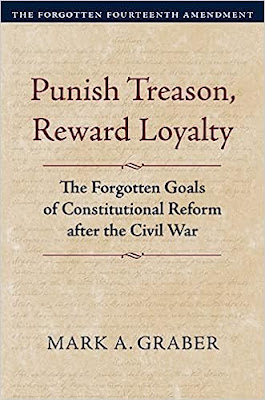
Mark A. Graber, Punish Treason, Reward Loyalty: The Forgotten Goals of Constitutional Reform after the Civil War (University of Kansas Press, 2023)
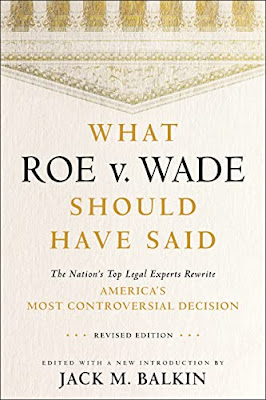
Jack M. Balkin, What Roe v. Wade Should Have Said: The Nation's Top Legal Experts Rewrite America's Most Controversial Decision - Revised Edition (NYU Press, 2023)

Andrew Koppelman, Burning Down the House: How Libertarian Philosophy Was Corrupted by Delusion and Greed (St. Martin’s Press, 2022)

Gerard N. Magliocca, Washington's Heir: The Life of Justice Bushrod Washington (Oxford University Press, 2022)
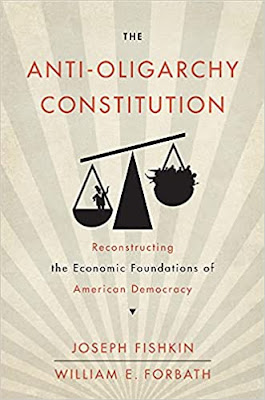
Joseph Fishkin and William E. Forbath, The Anti-Oligarchy Constitution: Reconstructing the Economic Foundations of American Democracy (Harvard University Press, 2022)
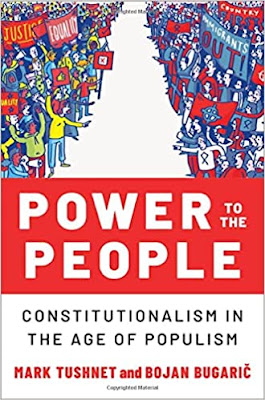
Mark Tushnet and Bojan Bugaric, Power to the People: Constitutionalism in the Age of Populism (Oxford University Press 2021).

Mark Philip Bradley and Mary L. Dudziak, eds., Making the Forever War: Marilyn B. Young on the Culture and Politics of American Militarism Culture and Politics in the Cold War and Beyond (University of Massachusetts Press, 2021).

Jack M. Balkin, What Obergefell v. Hodges Should Have Said: The Nation's Top Legal Experts Rewrite America's Same-Sex Marriage Decision (Yale University Press, 2020)

Frank Pasquale, New Laws of Robotics: Defending Human Expertise in the Age of AI (Belknap Press, 2020)

Jack M. Balkin, The Cycles of Constitutional Time (Oxford University Press, 2020)

Mark Tushnet, Taking Back the Constitution: Activist Judges and the Next Age of American Law (Yale University Press 2020).

Andrew Koppelman, Gay Rights vs. Religious Liberty?: The Unnecessary Conflict (Oxford University Press, 2020)

Ezekiel J Emanuel and Abbe R. Gluck, The Trillion Dollar Revolution: How the Affordable Care Act Transformed Politics, Law, and Health Care in America (PublicAffairs, 2020)

Linda C. McClain, Who's the Bigot?: Learning from Conflicts over Marriage and Civil Rights Law (Oxford University Press, 2020)
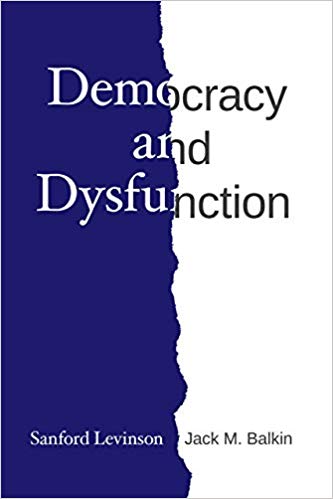
Sanford Levinson and Jack M. Balkin, Democracy and Dysfunction (University of Chicago Press, 2019)

Sanford Levinson, Written in Stone: Public Monuments in Changing Societies (Duke University Press 2018)

Mark A. Graber, Sanford Levinson, and Mark Tushnet, eds., Constitutional Democracy in Crisis? (Oxford University Press 2018)

Gerard Magliocca, The Heart of the Constitution: How the Bill of Rights became the Bill of Rights (Oxford University Press, 2018)

Cynthia Levinson and Sanford Levinson, Fault Lines in the Constitution: The Framers, Their Fights, and the Flaws that Affect Us Today (Peachtree Publishers, 2017)

Brian Z. Tamanaha, A Realistic Theory of Law (Cambridge University Press 2017)

Sanford Levinson, Nullification and Secession in Modern Constitutional Thought (University Press of Kansas 2016)

Sanford Levinson, An Argument Open to All: Reading The Federalist in the 21st Century (Yale University Press 2015)

Stephen M. Griffin, Broken Trust: Dysfunctional Government and Constitutional Reform (University Press of Kansas, 2015)

Frank Pasquale, The Black Box Society: The Secret Algorithms That Control Money and Information (Harvard University Press, 2015)

Bruce Ackerman, We the People, Volume 3: The Civil Rights Revolution (Harvard University Press, 2014)
Balkinization Symposium on We the People, Volume 3: The Civil Rights Revolution

Joseph Fishkin, Bottlenecks: A New Theory of Equal Opportunity (Oxford University Press, 2014)

Mark A. Graber, A New Introduction to American Constitutionalism (Oxford University Press, 2013)

John Mikhail, Elements of Moral Cognition: Rawls' Linguistic Analogy and the Cognitive Science of Moral and Legal Judgment (Cambridge University Press, 2013)

Gerard N. Magliocca, American Founding Son: John Bingham and the Invention of the Fourteenth Amendment (New York University Press, 2013)

Stephen M. Griffin, Long Wars and the Constitution (Harvard University Press, 2013)

Andrew Koppelman, The Tough Luck Constitution and the Assault on Health Care Reform (Oxford University Press, 2013)

James E. Fleming and Linda C. McClain, Ordered Liberty: Rights, Responsibilities, and Virtues (Harvard University Press, 2013)
Balkinization Symposium on Ordered Liberty: Rights, Responsibilities, and Virtues

Andrew Koppelman, Defending American Religious Neutrality (Harvard University Press, 2013)

Brian Z. Tamanaha, Failing Law Schools (University of Chicago Press, 2012)

Sanford Levinson, Framed: America's 51 Constitutions and the Crisis of Governance (Oxford University Press, 2012)

Linda C. McClain and Joanna L. Grossman, Gender Equality: Dimensions of Women's Equal Citizenship (Cambridge University Press, 2012)

Mary Dudziak, War Time: An Idea, Its History, Its Consequences (Oxford University Press, 2012)

Jack M. Balkin, Living Originalism (Harvard University Press, 2011)

Jason Mazzone, Copyfraud and Other Abuses of Intellectual Property Law (Stanford University Press, 2011)

Richard W. Garnett and Andrew Koppelman, First Amendment Stories, (Foundation Press 2011)

Jack M. Balkin, Constitutional Redemption: Political Faith in an Unjust World (Harvard University Press, 2011)

Gerard Magliocca, The Tragedy of William Jennings Bryan: Constitutional Law and the Politics of Backlash (Yale University Press, 2011)

Bernard Harcourt, The Illusion of Free Markets: Punishment and the Myth of Natural Order (Harvard University Press, 2010)

Bruce Ackerman, The Decline and Fall of the American Republic (Harvard University Press, 2010)
Balkinization Symposium on The Decline and Fall of the American Republic

Ian Ayres. Carrots and Sticks: Unlock the Power of Incentives to Get Things Done (Bantam Books, 2010)

Mark Tushnet, Why the Constitution Matters (Yale University Press 2010)
Ian Ayres and Barry Nalebuff: Lifecycle Investing: A New, Safe, and Audacious Way to Improve the Performance of Your Retirement Portfolio (Basic Books, 2010)
.jpg)
Jack M. Balkin, The Laws of Change: I Ching and the Philosophy of Life (2d Edition, Sybil Creek Press 2009)

Brian Z. Tamanaha, Beyond the Formalist-Realist Divide: The Role of Politics in Judging (Princeton University Press 2009)
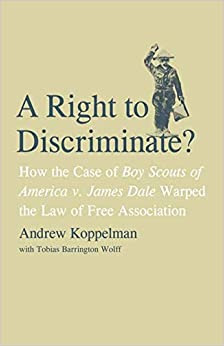
Andrew Koppelman and Tobias Barrington Wolff, A Right to Discriminate?: How the Case of Boy Scouts of America v. James Dale Warped the Law of Free Association (Yale University Press 2009)

Jack M. Balkin and Reva B. Siegel, The Constitution in 2020 (Oxford University Press 2009)
Heather K. Gerken, The Democracy Index: Why Our Election System Is Failing and How to Fix It (Princeton University Press 2009)

Mary Dudziak, Exporting American Dreams: Thurgood Marshall's African Journey (Oxford University Press 2008)

David Luban, Legal Ethics and Human Dignity (Cambridge Univ. Press 2007)

Ian Ayres, Super Crunchers: Why Thinking-By-Numbers is the New Way to be Smart (Bantam 2007)

Jack M. Balkin, James Grimmelmann, Eddan Katz, Nimrod Kozlovski, Shlomit Wagman and Tal Zarsky, eds., Cybercrime: Digital Cops in a Networked Environment (N.Y.U. Press 2007)
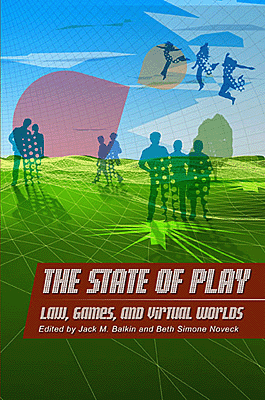
Jack M. Balkin and Beth Simone Noveck, The State of Play: Law, Games, and Virtual Worlds (N.Y.U. Press 2006)

Andrew Koppelman, Same Sex, Different States: When Same-Sex Marriages Cross State Lines (Yale University Press 2006)
Brian Tamanaha, Law as a Means to an End (Cambridge University Press 2006)
Sanford Levinson, Our Undemocratic Constitution (Oxford University Press 2006)
Mark Graber, Dred Scott and the Problem of Constitutional Evil (Cambridge University Press 2006)
Jack M. Balkin, ed., What Roe v. Wade Should Have Said (N.Y.U. Press 2005)
Sanford Levinson, ed., Torture: A Collection (Oxford University Press 2004)
Balkin.com homepage
Bibliography
Conlaw.net
Cultural Software
Writings
Opeds
The Information Society Project
BrownvBoard.com
Useful Links
Syllabi and Exams